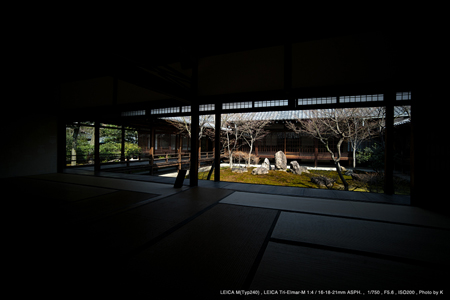














What do you expect from the Leica M body? The compact size? The unchanging design? Or, the rangefinder experience? All of these elements are what makes today's Leica M system special. You may find some slight changes in the design such as the absence of the traditional frameline illumination window on the front (thanks to the new LED brightframe) and the new rear thumb dial (to adjust the level of magnification). But still, this is the iconic Leica M. Well, the sensor changed from CCD to CMOS and this gives us the live-view function and the capability of movie shooting. The live-view facilitates accurate framing with ultra-wide-angle lenses and detailed focusing with fast lenses like Noctilux. The movie is captured on the full-size sensor through the Leica lenses for the first time. Of course, the new battery outsizes the old one because of the increased power use, but the camera body size is virtually unchanged. If you take a closer look, you will find that they thought so many things out to deal with this larger battery and still, maintain this universal size. Actually, I cannot stress enough how many times I thanked the live-view function when I was using a ultra-wide-lens around 16mm. Without the live-view, I would have been forced to fight with the parallax. Similarly, I found it very easy to frame with a ultra-telephoto lens because without the live-view I would have been to frame and focus in the small brightframe. And yet, the there were enough battery even after relying on the live-view. After all, this camera is very easy to use.
Now, let's talk about the sensor and the image. This Leica M has the all-new CMOS sensor, as opposed to the CCD sensor of the M9 (including M9-P and M-E) and the M8 that are the same in terms of the pixel pitch (of course the M9 family has the larger sensor). As expected, the images produced by this sensor were great and actually, the greatest among all digital Leica Ms. I am not surprised because seven years has passed since the M8 (which is still the excellent camera) was released, and not to mention, I have seen that the picture quality of many digital cameras has been improved. Again, this new sensor comes without a low-pass filter and produces more sharpness thanks to the added pixels. But what is more attractive is the added tonality. I had almost no complaints about it with the M9, but I must admit that it is richer with the new M. The white balance is also improved and it is the most neutral among the digital Ms ever produced. Images shot at high-ISO are also the best. They are not noise-free, and they look like film grain, but isn't this what we feel Leica-ish?
Even at the dawn of the SLR age, the Leica company was making the M rangefinders and to date, this hasn't changed. Yes, they have the R system, but I don't think it was most successful. So, my personal impression of Leica was the brand that was under the spell of the M, but I can say that the M body is the first millorless interchangeable-lens camera. Interestingly, in this digital age, the LCD liveview function has swept away the weakness of the Leica M body, and of course you can always go back to rangefinder to focus faster. When using an old soft focus lens like the Thambar, it can be a little hard to frame with the LCD. In such case, it is easier to focus with rangefinder than SLR's focusing screen. Putting the critical focusing aside, the same goes for a fast lens like the Noctilux. However, you may still want to pinpoint a strand of hair, and the Leica M assists you to do it. This is what I call a "breakthrough" of this camera. I may be overstating, but the M body has an ultimately short flange back and hence it takes those legendary lenses from all over the world. And yet, they are captured on the Leica's full-size sensor. The conclusion? The Leica M is the ultimate millorless camera.
See below for the detailed explanation of the sample images shot in Kyoto, Japan. Come back to photo yodobashi again as I will shoot with older lenses and lenses from other brands!
( PHOTO YODOBASHI : K )
LEICA TRI-ELMAR-M 1:4/16-18-21mm ASPH.
At Kenninji-Temple. If you want to take Kyoto photo, I highly recommend this temple because you can take photography. To be honest, the Tri-Elmar was hard to use because of the parallax, but now with the new M, you can check the perspectives and shoot parallax-free. Check the beautiful tonality from deep-shadow.
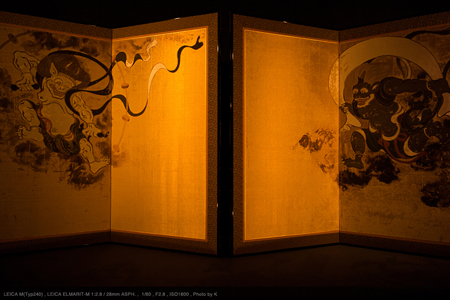
LEICA ELMARIT-M 1:2.8/28 mm ASPH.
At Kenninji-Temple. No problem with ISO800. The quiet shutter sound doesn't distract the tranquility of this environment where everyone was sitting and looking at this screen in silence. Unlike older digital Ms, I don't feel like adjusting parameters when developing because of the excellent contrast and white balance. I felt the gap between RAW and JPG was almost nonexistent as well.
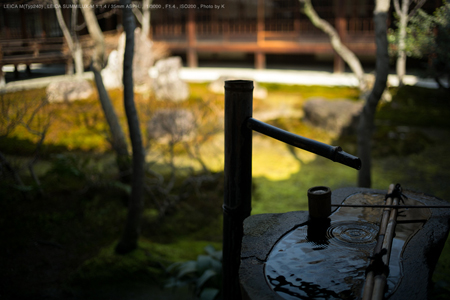
LEICA SUMMILUX-M 1:1.4/35mm ASPH.
The back bokeh is a little rustling, but it's a great lens. The dynamic range seems to be very wide and the shadow is deep black. I really liked this sight and just wanted to keep looking without any intent.
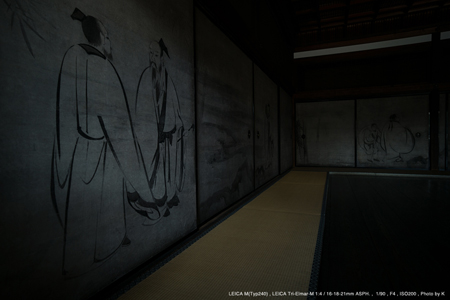
LEICA TRI-ELMAR-M 1:4/16-18-21mm ASPH.
With rich tonality, you can also capture the scene with less contrast. This contrast isn't made possible by adjusting the contrast parameter, but by what the sensor and the lens produce naturally. In this situation, I have no problem in switching to the live-view LCD screen focusing and I pay my respect to those who use rangefinder. :)
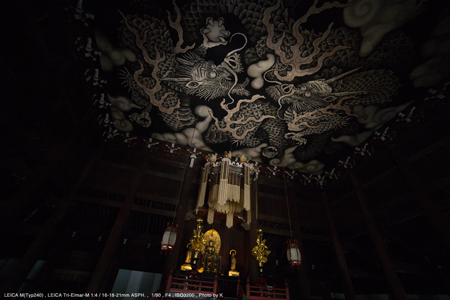
LEICA TRI-ELMAR-M 1:4/16-18-21mm ASPH.
When you change the shooting angle, the perspective changes drastically with lenses wider than 21mm. I have been using standard lenses on Leica Ms, while using ultra-wide or telephoto lenses on SLRs. But from now on with this Leica M covering all focal length, my bag weighs less! This one was shot at the high ISO3200 and I was most amazed because this was something I didn't expect from Leica unlike other brands.
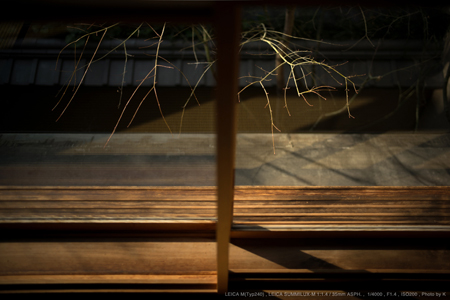
LEICA SUMMILUX-M 1:1.4/35mm ASPH.
From the window of a Japanese inn. The lens captured this beautiful branch with excellent sharpness and solidity.

LEICA TRI-ELMAR-M 1:4/16-18-21mm ASPH.
I used this lens with the M9 when this website was released. I felt it was a bit too contrasty at that time, but the contrast is perfect with the M and this maybe because of the richer tonality. I am often amazed by the beauty style when visiting foreign old towns, I should emphasize that we have such a beautiful world in Japan, too.
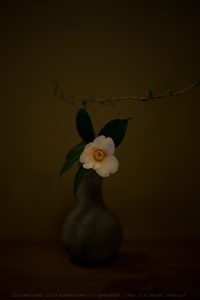
LEICA SUMMILUX-M 1:1.4/50mm ASPH.
I can't remember how many times until I reach to this tonality. I want to keep trying this forever because of the M's rich tonality. I am glad to be a Japanese because they can make a world with just one single flower. When you get the Leica M, try shooting where everything is sank in the realm of shadow, and I guarantee you cannot escape from there. :)
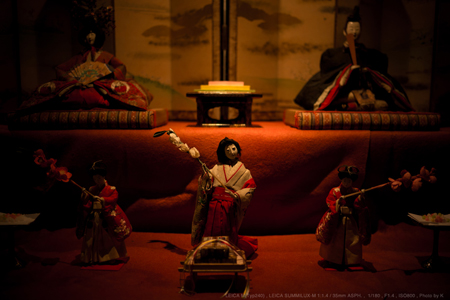
LEICA SUMMILUX-M 1:1.4/35mm ASPH.
White balance set to daylight. With the M8 or M9, this scene would have been more yellow and we had to adjust when developing. With the M, it is neutral.
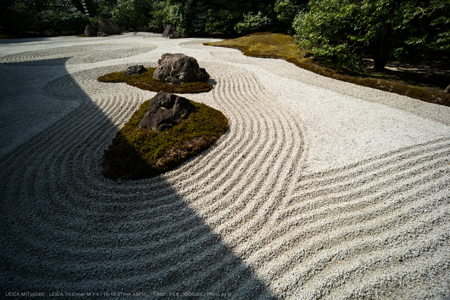
LEICA TRI-ELMAR-M 1:4/16-18-21mm ASPH.
At Kenninji Temple again. Two foreign female tourists said this sight was breathtaking and they were shooting earnestly with their compact cameras. They said they couldn't still photograph beautifully and I asked them to show me their monitors. Oh, I see how the perspective changes internationally. I took some shots for them and they were so delighted. Now I understand why. They simply hadn't seen anything like this in their life! Now again, let me repeat. The LCD screen framing is awesome. :)
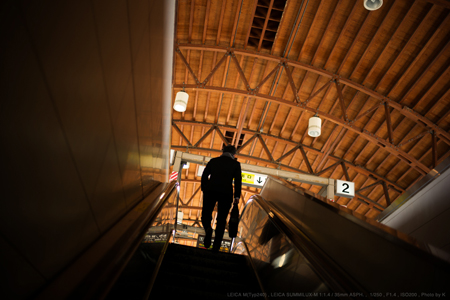
LEICA SUMMILUX-M 1:1.4/35mm ASPH.
At JR Nijo Station. Very unique roofing. When traveling abroad, I am always amazed by the train station buildings and I hope there will be more stations like this in Japan.
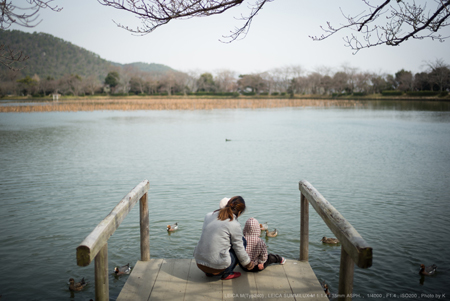
LEICA SUMMILUX-M 1:1.4/35mm ASPH.
At the Daikakuji-temple. The color fringing can't be seen… maybe the body detected the lens automatically and corrected the fringing. But the limb darkening isn't much corrected and this may be another Leica-ish tailoring.
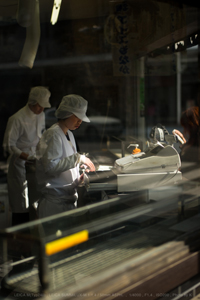
LEICA SUMMILUX-M 1:1.4/50mm ASPH.
At Kyogoku-area. Again, I was amazed by the performance of this 50mm.
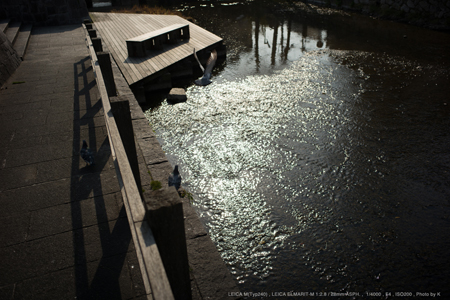
LEICA ELMARIT-M 1:2.8/28 mm ASPH.
This area shows up on TV programs (especially the mystery stories). I kind of distracted their naps expecting their flying away and shot many times (I mean the photos, of course).
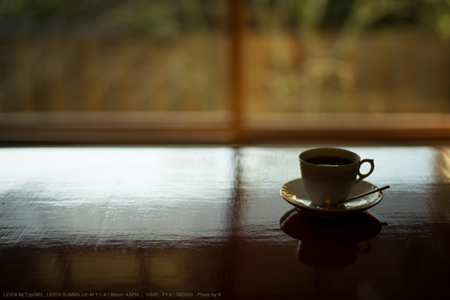
LEICA SUMMILUX-M 1:1.4/50mm ASPH.
Eyeball this shot. With older models, I would have either over-expose or under-expose. But with this new M, I just shot without adjusting exposure. The resolution is important, but that comes only after rich tonality is realized, I think.
